Physical Address
304 North Cardinal St.
Dorchester Center, MA 02124
Physical Address
304 North Cardinal St.
Dorchester Center, MA 02124
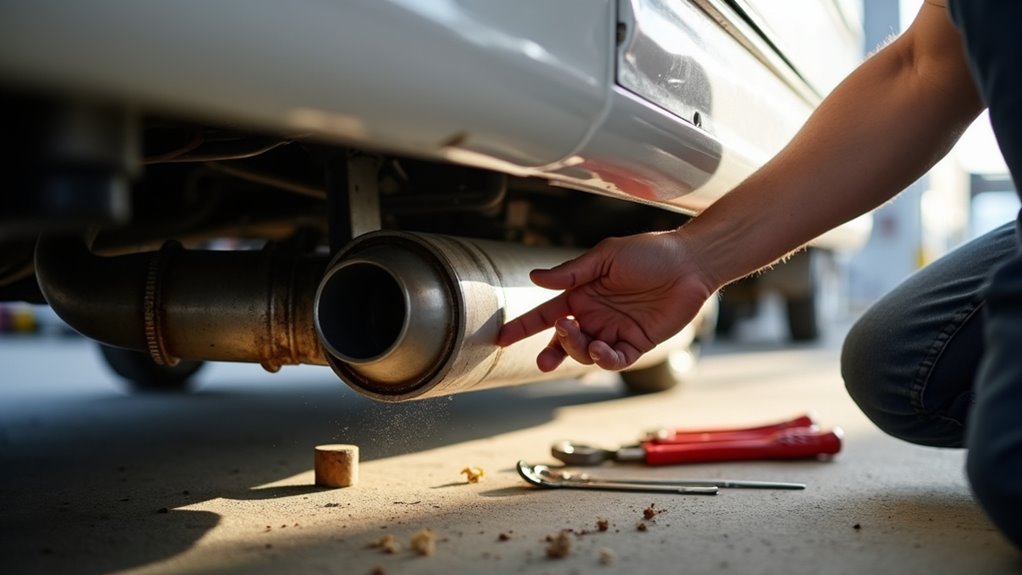
Learn why your RV's catalytic converter is crucial for eco-friendly travel and how proper maintenance can prevent costly repairs.
Just when you’re planning your next RV adventure, you’ll discover that catalytic converters aren’t just another part under your vehicle – they’re essential for both legal compliance and environmental protection. You’ll find these devices quietly working to transform harmful emissions into less dangerous substances, making your travels cleaner and safer. While they might seem like a simple component, there’s more to these pollution-fighting powerhouses than meets the eye, and knowing the basics could save you thousands in repairs.
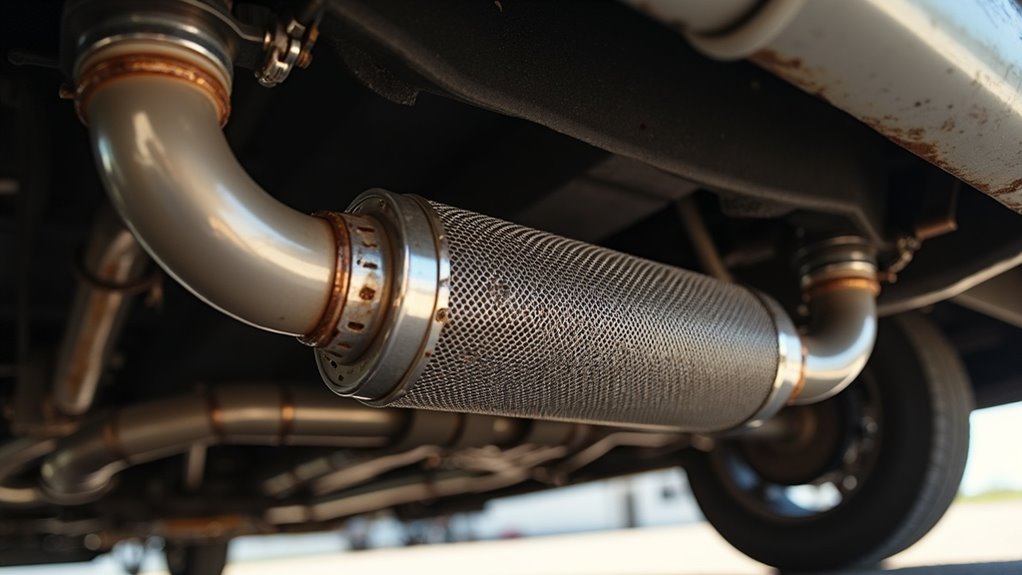
While most RV owners focus on their vehicle’s living amenities, the catalytic converter plays an essential role in making RV travel more environmentally friendly. You’ll find this vital component in your RV’s exhaust system, where it transforms harmful emissions into less dangerous substances.
Your catalytic converter works by triggering chemical reactions when exhaust gases pass through its precious metal-coated substrate. Regular maintenance of your RV’s catalytic converter can help it last up to a decade. It’s designed to target three main pollutants: hydrocarbons, carbon monoxide, and nitrogen oxides.
As these gases flow through the converter, they’re broken down into water vapor, carbon dioxide, and nitrogen. The process doesn’t directly boost your engine’s performance, but it’s important for meeting environmental standards and keeping the air clean.
A catalytic converter transforms harmful emissions into cleaner byproducts, prioritizing environmental compliance over engine performance gains.
Think of it as your RV’s environmental guardian, silently working to reduce its ecological footprint.
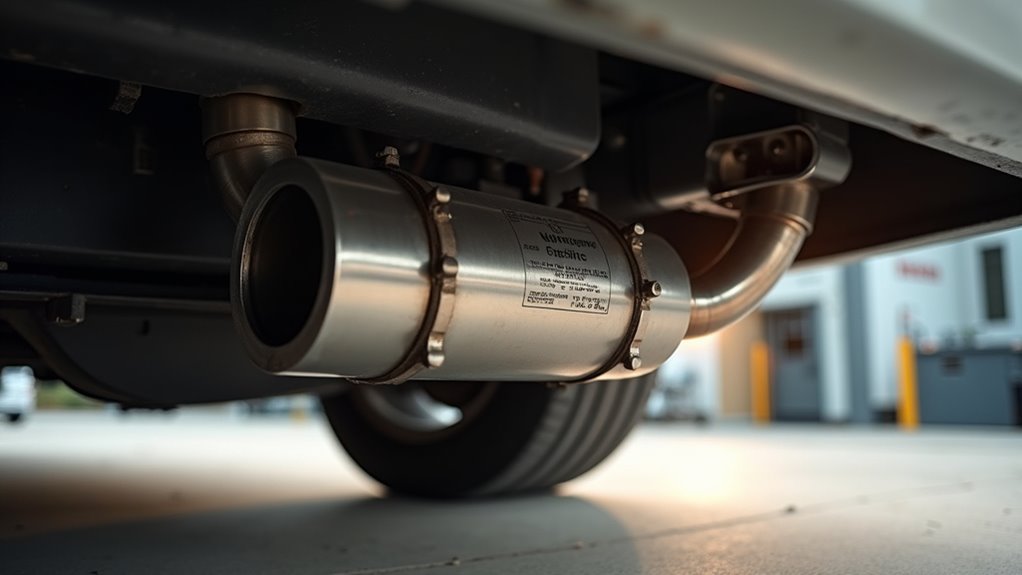
When it comes to RV catalytic converters, you’ll need to navigate a complex set of legal requirements enforced by the Environmental Protection Agency (EPA).
Under federal law, your RV must have a functioning catalytic converter that meets emissions standards set by the Clean Air Act.
You can’t install non-certified aftermarket converters or tamper with existing ones – it’s illegal and could result in hefty fines.
If you need a replacement, make sure it’s EPA-certified and installed in the original location according to manufacturer specifications. Your converter must also work properly with your RV’s air injection components.
Remember to keep up with regular maintenance and emissions testing to stay compliant with both state and federal regulations.
If you’re unsure about any aspects of compliance, it’s best to consult a professional to avoid potential legal consequences.
The converter’s primary function is to convert dangerous pollutants into less harmful gases through chemical reactions.
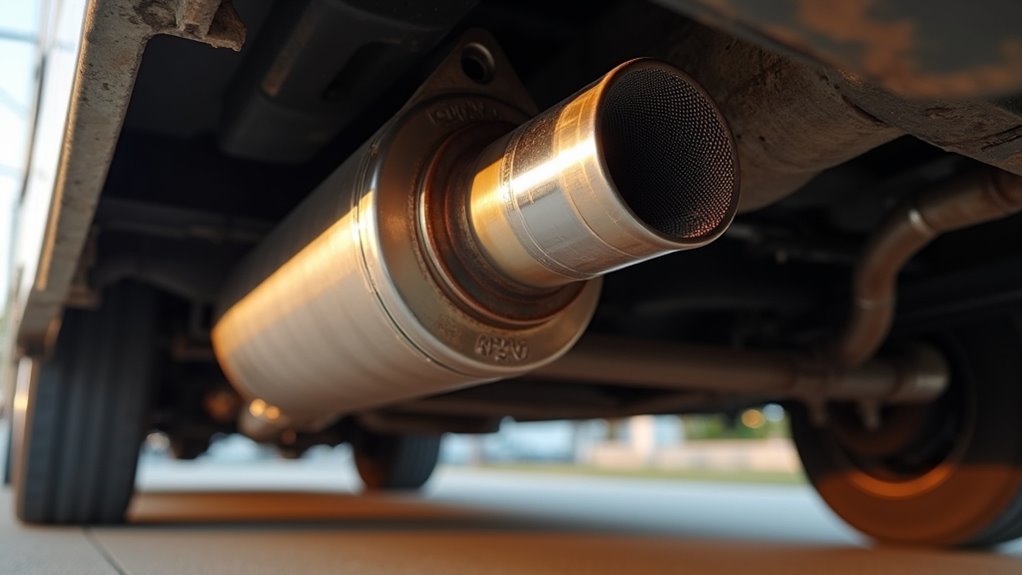
Maintaining your RV’s catalytic converter properly can greatly extend its lifespan and prevent costly repairs.
Regular cleaning and inspection are essential for peak performance, and you’ll find several effective maintenance methods to keep your converter running smoothly. Be alert for any rattling sounds from underneath your RV, as this often indicates internal damage to the converter’s honeycomb structure.
Remember to use quality fuel and avoid short trips to prevent premature converter damage.
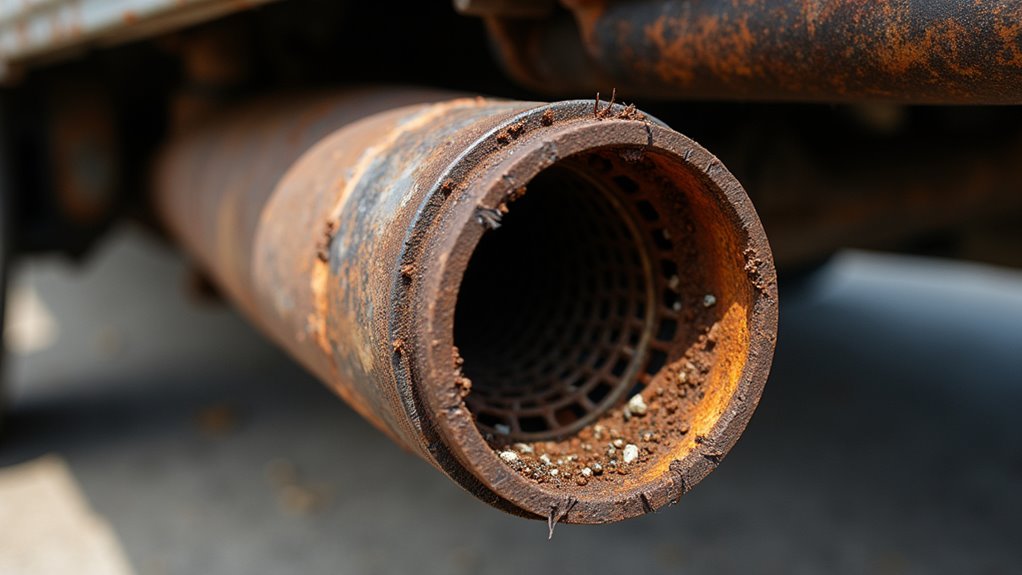
As an RV owner, you’ll need to stay vigilant about potential catalytic converter issues, since they can lead to costly repairs and unsafe driving conditions if left unchecked.
Watch for key warning signs like your check engine light coming on, reduced engine power, or a distinct rotten egg smell from your exhaust. If you hear rattling noises or notice your RV overheating, these could indicate serious converter problems. With larger vehicles like RVs having bigger catalytic converters, the cost and risk of issues can be significantly higher.
Pay attention to your fuel economy too – a sudden drop might signal converter failure. Don’t ignore these symptoms, as they’ll only worsen over time.
A failing catalytic converter can cause engine damage, create fire hazards, and release harmful emissions. Plus, you’ll likely fail your emissions test and face more expensive repairs down the road if you postpone addressing these issues.
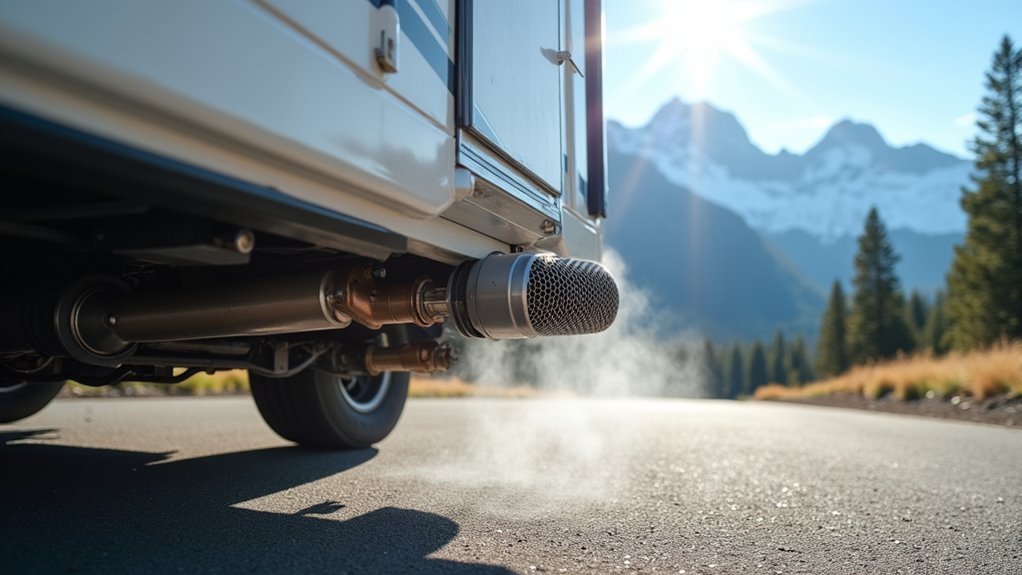
While RV adventures bring freedom to explore the great outdoors, your vehicle’s catalytic converter plays an essential role in protecting the environment you’re traveling through.
Modern catalytic converters can eliminate up to 98% of harmful pollutants from your RV’s exhaust, converting them into less harmful substances and helping maintain air quality in the beautiful locations you visit.
Using precious metal catalysts, these devices have been helping combat air pollution in cities and rural areas since their invention in the 1950s.
When your catalytic converter is working properly, you’ll contribute to:
Without this vital component, your RV could emit as much pollution as dozens of cars, greatly impacting the natural environments you’re seeking to enjoy.

RV owners facing catalytic converter replacement have several options to evaluate, from direct-fit OEM parts to universal aftermarket solutions.
You’ll find that direct-fit converters, while more expensive ($300-$2,500), offer easier installation and better compatibility with your specific RV model.
If you’re mechanically inclined, you can save considerably on labor costs by installing the converter yourself. However, professional installation is recommended for complex systems, with labor rates typically ranging from $70-$130 per hour.
Whether you choose a dealer, independent shop, or DIY approach, consider your RV’s specific needs – engine size, model year, and maintenance history all affect your choices. Pay attention to any rotten egg smell from your exhaust, as this is a clear indicator that your converter needs replacement.
For the best balance of cost and reliability, compare prices between dealers, independent shops, and online retailers, keeping in mind that quality shouldn’t be compromised for savings.
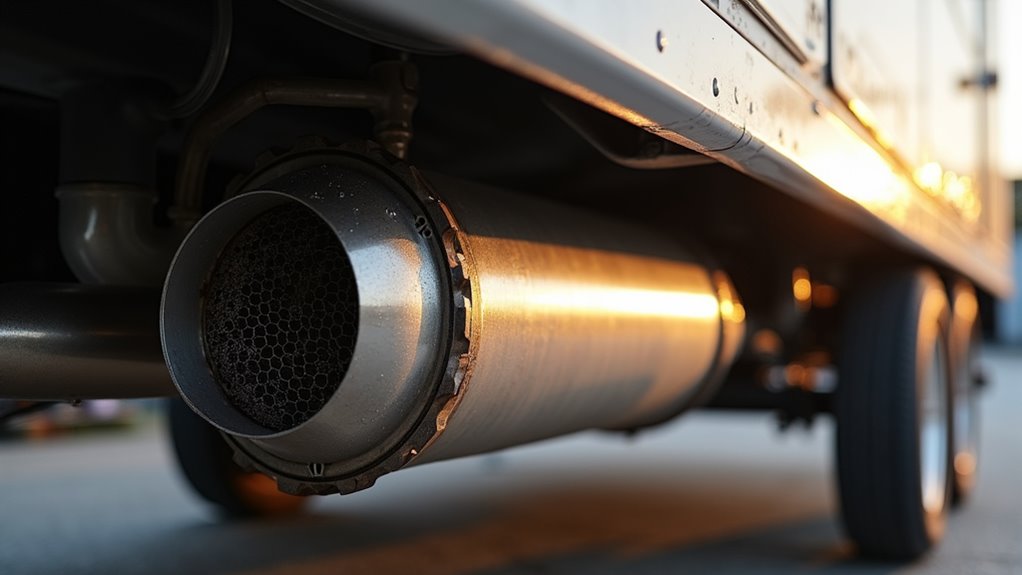
Beyond the financial aspects of replacement, understanding how catalytic converters affect your RV’s performance is key to maintaining peak function. A faulty converter can greatly impact your RV’s operation, from reduced fuel efficiency to decreased power output, especially when climbing hills or accelerating. Poor performance is often more noticeable at low speed operation.
To maintain ideal efficiency, you’ll need to use high-quality fuel, keep up with regular maintenance, and verify your oxygen sensors are working correctly.
Don’t ignore oil leaks or faulty spark plugs, as they can quickly compromise your converter’s performance.
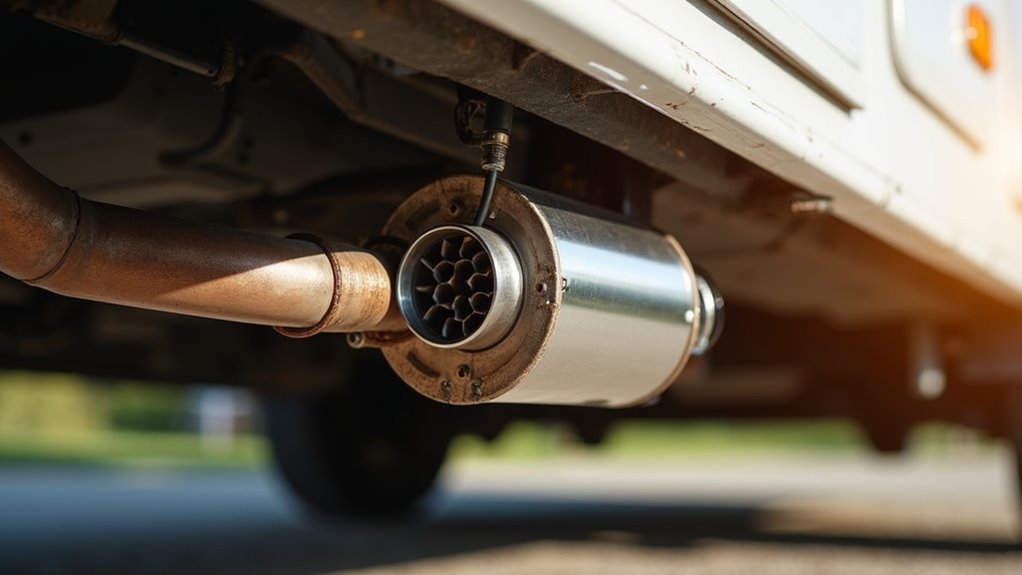
To maximize your catalytic converter’s lifespan and maintain its efficiency, you’ll need to implement several key maintenance strategies.
Start by following your manufacturer’s recommended service schedule and using high-quality fuel. Don’t skip those regular oil changes, as they’re vital for your engine’s health and your converter’s performance.
Make it a habit to park your RV in secure, well-lit areas or inside a garage when possible. Consider installing a protective cage to prevent theft. Extended warranty coverage can provide additional protection for your catalytic converter investment.
You’ll also want to avoid prolonged idling and maintain your spark plugs to prevent unburned fuel from damaging the converter. Regular inspections by a qualified mechanic can catch potential issues early, saving you money in the long run.
Keep detailed maintenance records and verify any replacements meet emissions standards for your area.
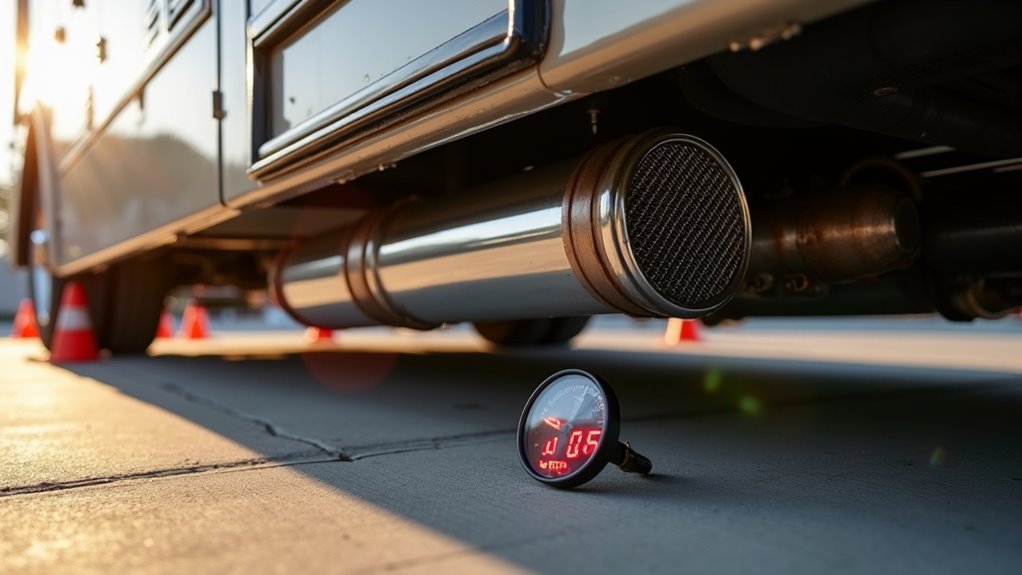
While maintaining your RV’s catalytic converter is essential, protecting it from theft has become an increasing priority for owners nationwide. You’ll need to regularly inspect your converter and implement proper security measures to safeguard this valuable component.
Remember to park in well-lit areas with surveillance when possible, and consider installing an alarm system that detects vibration. Installing triple-layered steel straps provides maximum protection against theft attempts.
Regular inspections and documentation will help protect your investment and assist with insurance claims if needed.
Your RV’s catalytic converter is worth its weight in gold when it comes to protecting our environment and keeping you road-legal. While maintenance might feel like you’re climbing Mount Everest, staying on top of inspections and warning signs will save you thousands in the long run. Remember, you’re not just maintaining a part – you’re investing in cleaner air, better performance, and worry-free adventures on the open road.